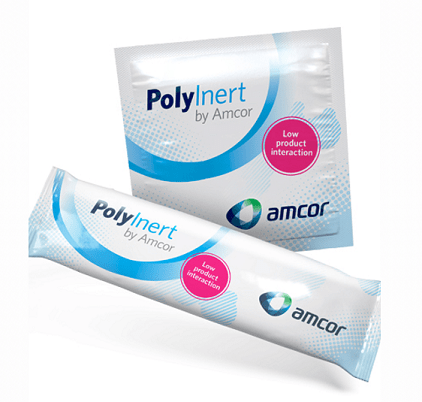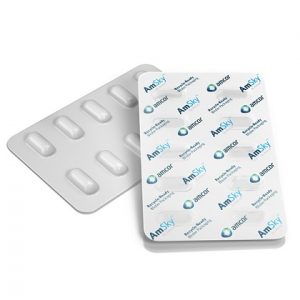
Packaging South Asia recently interviewed Roy Joseph the vice president and general manager of Amcor India, which is one of the several multinational packaging companies that have multiple locations in the country. Amcor wants to bring its packaging and sustainability solutions and innovations to the global and Indian manufacturers across the country – the consumer, health, and pharmaceutical producers and exporters. Edited excerpts of the interview by Priyanka Tanwar and Naresh Khanna are given below.
In our interaction, we learned that the company has unique roadmaps for achieving sustainable and recycling packaging for each segment and type of product. It seems to have a granular approach to each type of packaging solution to which it can bring to bear its development work. In India, it has recently established the Bharuch plant in Gujarat which meets the sustainability roadmap for several categories. It can also access solutions from any of its plants and development centers around the world such as its state-of-the-art healthcare packaging facility in Singapore designed to meet healthcare-industry needs for quality and regulatory compliance, and which has the capacity for growth to support medical device manufacturers.
Amcor’s flexible packaging products for the Indian market are laminates, labels, and pouches for food and personal care, and healthcare, pharma, and medical device packaging. Realizing the enormous potential for exports, the company is a specialty packaging supplier for proteins such as poultry, red meat, seafood, dairy. This segment would include the company’s solutions for retort, breathable and liquid packaging. At the same time, Joseph is particularly knowledgeable and optimistic about Indian pharmaceutical export growth.
PSA – Tell us about your manufacturing plant in Bharuch, Gujarat.
Roy Joseph – This is the first site in India with HD Flexo in scale for flexible packaging and it is designed to meet the sustainability road maps for various categories of products and their packaging. The plant includes a high-speed CI flexo press with digital inspection and also has online variable printing capability. This is a plant designed to benchmark sustainable packaging in the country and has the lowest energy footprint in the industry.

PSA – Amcor has added many healthcare innovations to its kitty. Please describe some of the solutions applicable to the Indian healthcare and pharmaceutical segment.
Roy Joseph – We have two types of solutions for the oral, dermal, medical devices, ophthalmic, pulmonary, and respiratory segments. Firstly, there are the PolyInert laminates specifically developed to meet the needs of markets where preventing the absorption of Active Pharmaceutical Ingredients (APIs) is critical. Amcor’s Polyinert Sachet and Stickpack laminates minimize the product-packaging interaction via scalping. This solution was the winner of the Alufoil Trophy in 2018.
Secondly, we have tailored solutions for fluid packaging or IV packaging which is a range of barrier films that ensure the shelf-life of medical fluids for dialysis, nutritional and pharmaceutical solutions to blood collection systems and derivatives.
PSA – What makes these solutions interesting for the Indian pharmaceutical industry and co-packing facility owners?
Roy Joseph – The Indian pharma industry is growing fast thanks to the fast-growing generic exports to the US, Europe, and the rest of the world, and Amcor offers Indian pharma companies access to the new packaging technologies.
PSA– Please tell us a bit more about the new Amcor healthcare packaging facility in Singapore.
Roy Joseph – The new facility is designed to meet and exceed healthcare-industry needs for quality and regulatory compliance, with the capacity for growth to support medical device manufacturers. Here Amcor will innovate co-extrusion films and printing technology while driving sustainable packaging offerings to the medical-device packaging industry.
The new Singapore site is indeed a state-of-the-art facility; it has a new 3-layer and 9-layer high barrier blown film line beside the existing 3-layer and 7-layer lines which increases the annual capacity for blown films to 10,900 tons. The entire blown film area has filtered ventilation and the die, extruder, and tower area have positive atmospheric pressure which is a need for the medical device and pharma industry. The printing, slitting, and primary packaging area is a 100k cleanroom (ISO Class 8) and is prepared for an upgrade to 10k (ISO Class 7 ). The facility is ISO 9001, 2015, and ISO 13485 certified.
PSA – Please also explain the concept behind the recently introduced healthcare lidding technology by Amcor.
Roy Joseph – Amcor has introduced in the market aluminum blister lidding solutions with nitrocellulose-free options for both plain and printed lids. This product offering addresses the demands of the industry and regulatory bodies (EMA / USFDA) to move away from nitrocellulose which is one of the contributing factors for nitrosamines. The European Medicines Agency has assessed the risk of nitrosamine formation or presence during the manufacture of human medicines and advised to avoid its presence. Amcor’s nitrocellulose-free solutions address this concern.
PSA – What are the other sustainable pharma innovations by Amcor, for instance for blister packaging?
Roy Joseph – Amcor continues to work on sustainable packaging solutions for the pharma industry. As part of Amcor’s publicly stated goal of manufacturing recyclable and recycle-ready packaging solutions, Amcor has recently developed a product called AmSky.

AmSky eliminates PVC from the packaging by using PE thermoformed blister and lidding film and gives a much better barrier property than PVC, Pvc/Pvdc, and normal cold form blisters. PVC can make packaging recycling more difficult or contaminate other recycling streams hence even after removing PVC, AmSky retains all other benefits of pre-existing blister packaging.
Thus, Amcor has created a new recyclable solution that benefits the entire recycling process which also meets all stringent global regulatory requirements. Amcor is also a pioneer in developing PVC-free, polyethylene-based cold form blisters solutions.
PSA – Is Amcor also looking at paper-based substitutes for plastics in pharma?
Roy Joseph – Amcor continues to explore paper-based packaging solutions for pharma applications and work on barrier technologies that would be essential to protect pharmaceutical drugs from moisture as well as oxygen. Amcor also has in its product portfolio grid lacquer coated paper and coated Tyvek paper suitable for packaging various medical packaging devices and healthcare applications.
PSA – Some of us associate Amcor with Hindustan Unilever in India. Tell us more about this connection.
Roy Joseph – Amcor works across categories like foods, personal care, laundry, beverages, pharma, medical, meat, and dairy, and customers are widespread – while Unilever in India is a customer in some of the categories. Amcor has a good mix of local and MNC customers in India.
PSA – Please throw some light on Amcor’s acquisition of Packaging India from Essel Propack. How did this acquisition assist you in strengthening your foothold in the Indian packaging market?
Roy Joseph – This was six years back – in 2015, and for Amcor to establish a footprint in South India. Since then, we have made significant investments in capacity and capability across our India sites. Labels and pouches are some of the recent capability additions in the country. Globally, in 2019 Amcor acquired Bemis and added a significant number of products to our portfolio.
PSA – What effect did the Covid-19 pandemic have on Amcor’s operations in India and worldwide?
Roy Joseph – Safety is a very integral part of Amcor Values and we have used the Safety frame to bring Health and Wellbeing in the focus which has helped us in these times. Our standards are generally higher than government norms which also include random testing, BCP, and the use of apps to track and trace. We did and are incurring additional costs during this period.
PSA – Lastly, what are Amcor’s sustainability goals for 2022 and beyond?
Roy Joseph – Innovation is central to Amcor’s approach to sustainability. We spend US$ 100 million a year globally on research and development, focused on delivering on our pledge to have all our packaging recyclable or reusable by 2025. Amcor’s sustainability strategy goes beyond just our pledge. We have an overarching strategy that sets a clear direction on safety, operations, and talent. Through our longstanding EnviroAction program we are also reducing our greenhouse gas emissions and our operational waste. We are also focused on delivering the three core requirements of responsible packaging — innovation, infrastructure, and consumer participation.
Already we have made significant progress toward meeting our pledge. In FY21, US$ 7.7 billion (approximately Rs crore) of Amcor’s revenue was from packaging that was designed to be recycled, comprising 74% of our total production. We made significant progress in FY21 with regards to our flexible packaging portfolio, which has historically presented the biggest design challenges for recyclability.








